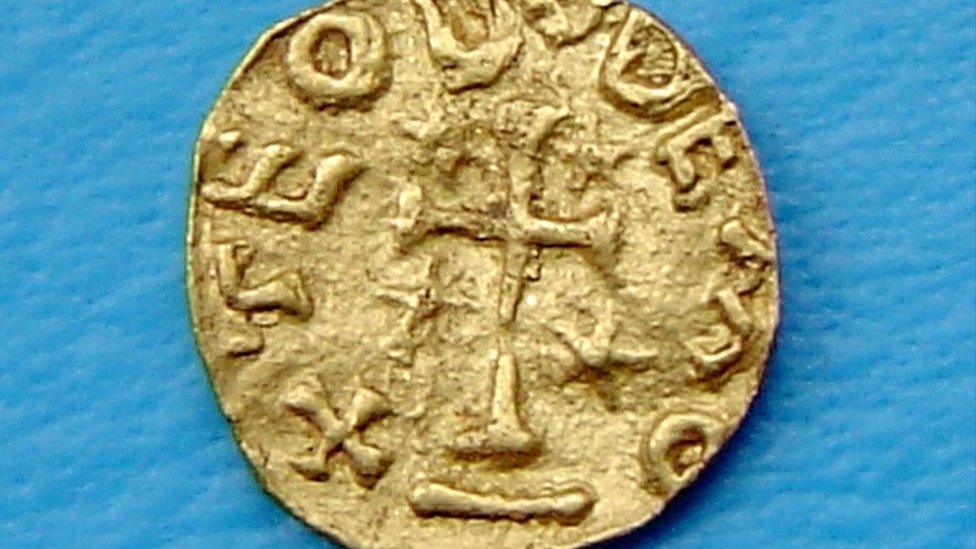Largest Anglo-Saxon gold coin hoard found in Norfolk
- Published
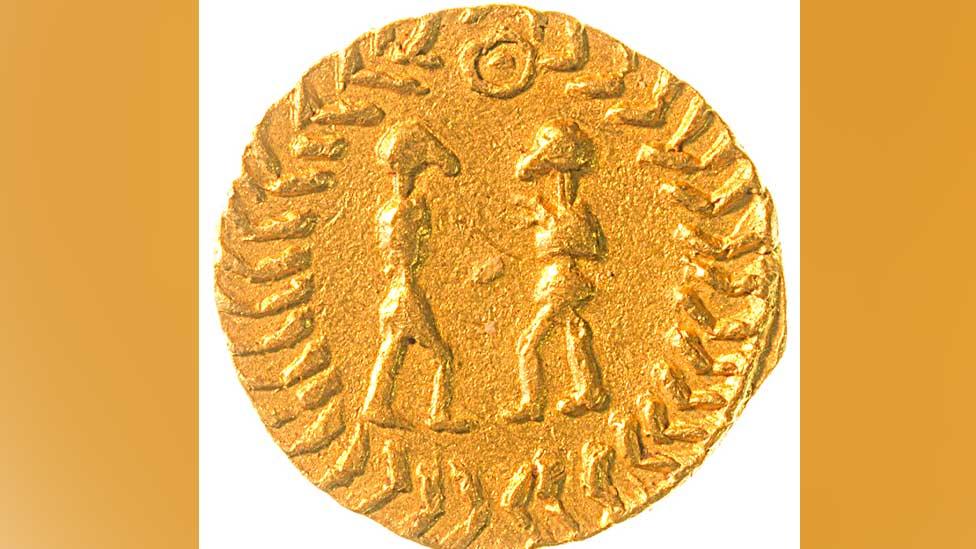
All the coins were found in a single field. Its owner and the detectorist who found the majority wish to remain anonymous
The largest hoard of Anglo-Saxon gold coins to be found in England has been declared treasure at an inquest.
Four gold objects were discovered with 131 coins in a field in west Norfolk, most by the same anonymous metal detectorist who notified the appropriate authorities, external.
Ten coins were found by a serving police officer who tried to sell them and was jailed for 16 months.
Norwich Castle, external hopes to acquire the "internationally significant" hoard.
Gareth Williams, curator of early medieval coins at the British Museum, external, said the "hugely important find", which dates to the same era as the Sutton Hoo ship burial near Woodbridge in Suffolk, is "the largest coin hoard of the period known to date".
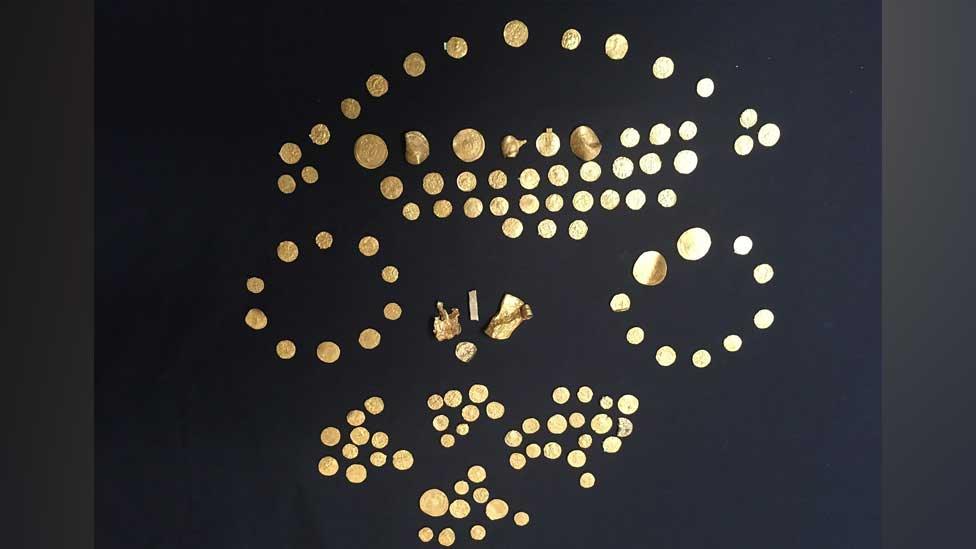
It is the most important hoard found in Norfolk "by a long way", according to coin expert Adrian Marsden
The first coin was discovered in 1991, but it was not until 2014 that further coins, dating to about AD610, were found.
Some were minted in the Byzantine empire, external, but most were from the Merovingian kingdom, external, which broadly corresponds to modern day France.
Numismatist Adrian Marsden, from the Norfolk Historic Environment Service, said: "All the coins were minted on the continent, as we didn't have gold coins of our own then."
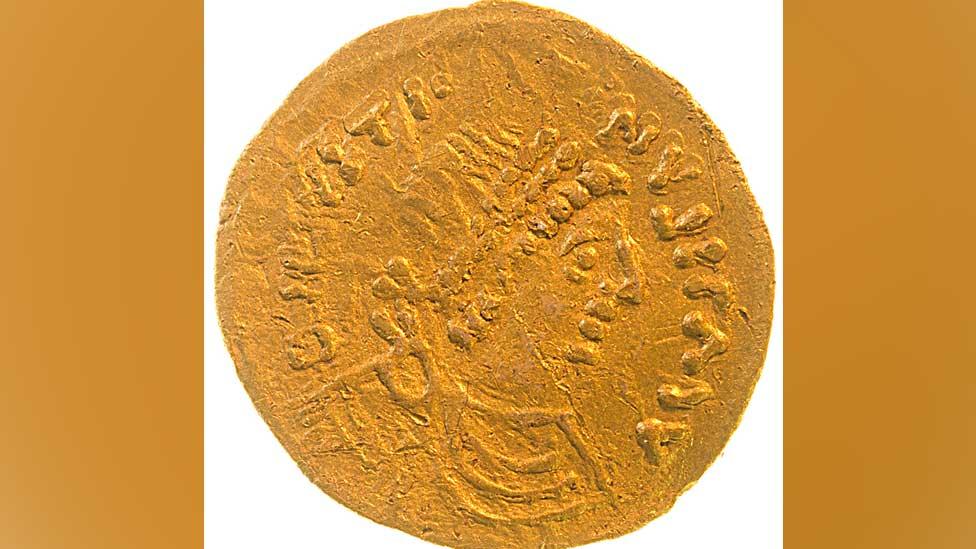
This includes coins struck from the same die in the same workshop as those found in a purse at the Sutton Hoo.
A stamped gold pendant, a gold bar and two other pieces of gold were found at the same time, suggesting the hoard should be seen as bullion, valued by weight rather than face value.
Mr Marsden said: "It seems to have been built up by someone moving around the Merovingian kingdom.
"And as it was found near an Anglo-Saxon cemetery, it may have been buried in a barrow (burial), external and scattered by centuries of ploughing."
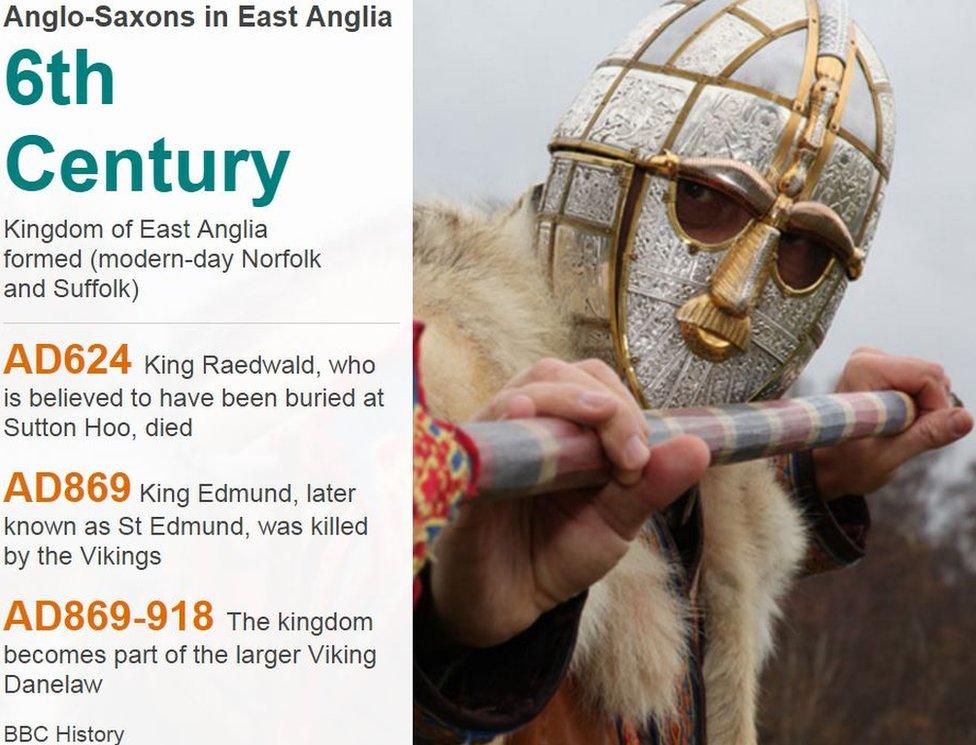
The hoard includes coins not previously known to experts and another that was only known through a drawing in a book dating to 1666 but has since been lost.
The previous largest Anglo-Saxon coin hoard - 101 coins in a purse - was found at Crondall in Hampshire in 1828, external.
The Staffordshire hoard, discovered in 2009 and dating to the mid-7th Century, does not include coins.
Norwich Castle and Art Gallery curator Tim Pestell described is as an "internationally significant find" which "reflects the wealth and continental connections enjoyed by the early Kingdom of East Anglia."
The hoard was declared treasure at an inquest at Norfolk Coroner's Court in Norwich.

The coins are mostly at least 85% gold, according to Mr Marsden

Find BBC News: East of England on Facebook, external, Instagram, external and Twitter, external. If you have a story suggestion email eastofenglandnews@bbc.co.uk, external
Related topics
- Published23 July 2021
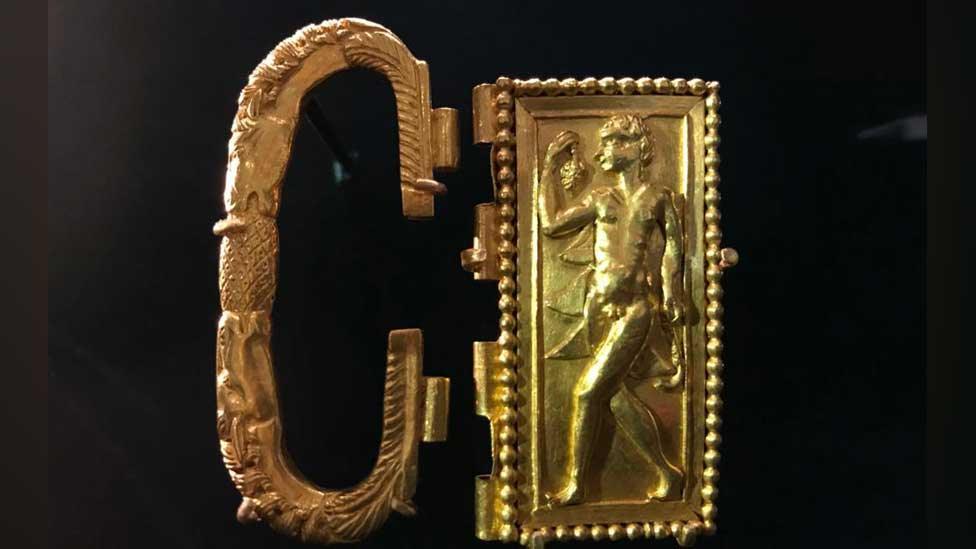
- Published10 July 2021
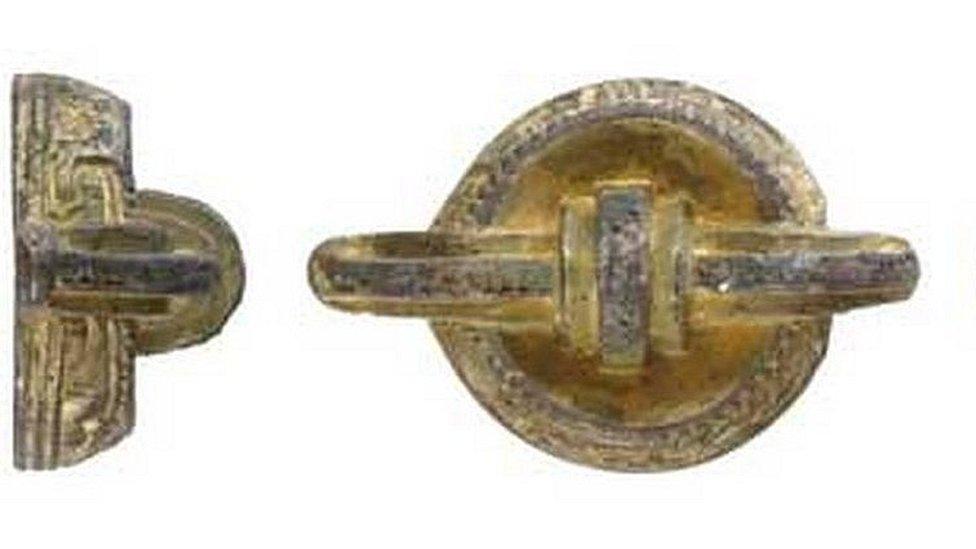
- Published3 July 2021
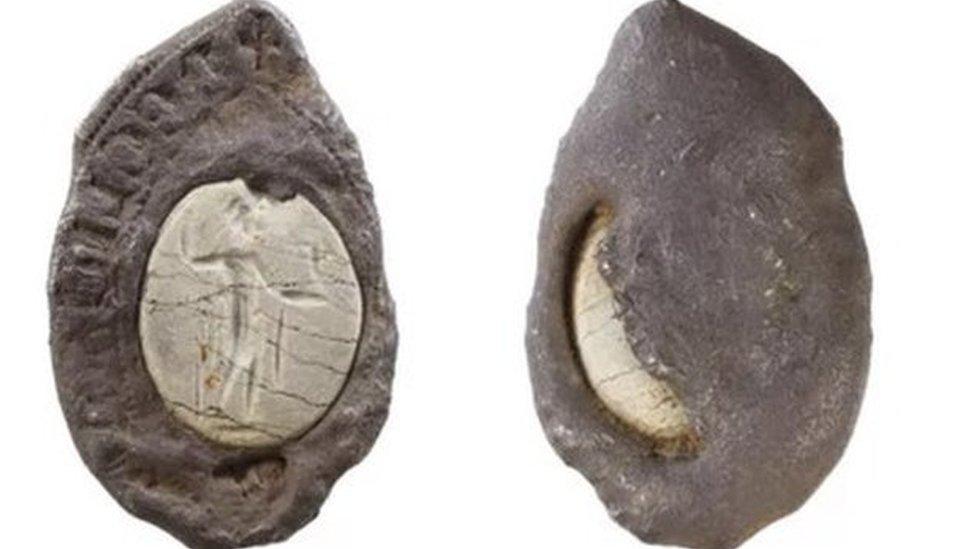
- Published17 January 2021
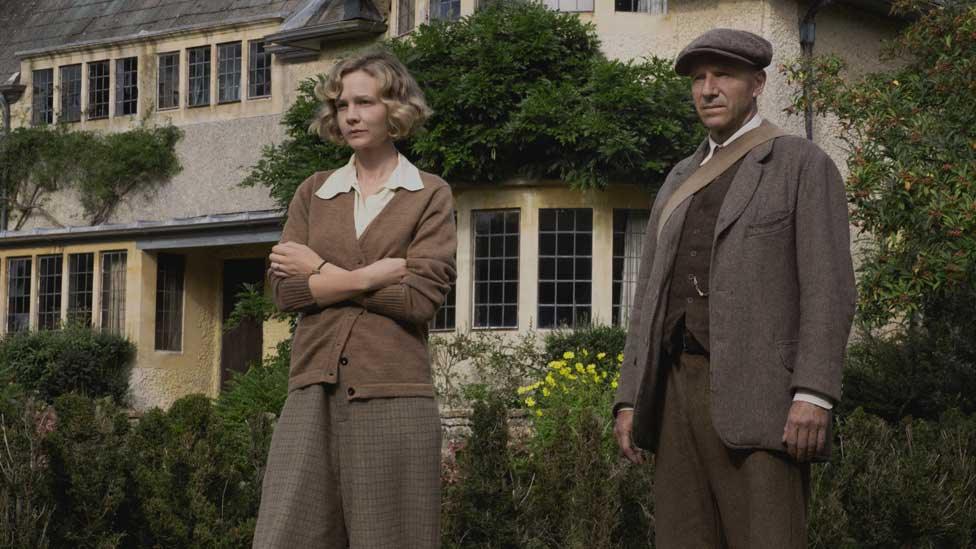
- Published8 March 2017
